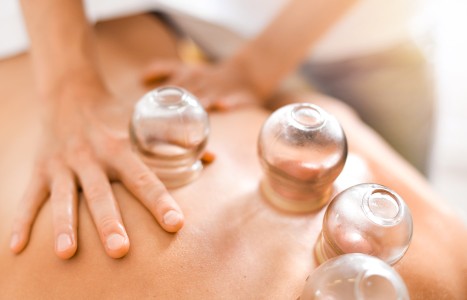Whether you accept it, avoid it or live somewhere in between, insurance coverage has become a defining issue for our profession. Patients increasingly expect to use their benefits, practitioners want to be compensated fairly for their time and expertise, and the system itself remains – at best – fragmented. The encouraging news is that coverage has expanded in meaningful ways. The challenging news is that reimbursement, across the board, remains inadequate.
Forbidden Secrets of Women’s Longevity (Pt. 2)
- The Daoist concept of nei dan (internal alchemy) was widely practiced by imperial women, particularly Empress Dowager Cixi, who was known for maintaining a youthful appearance well into her 70s.
- Palace medical records describe a special qi gong method used by concubines and female Daoist practitioners to preserve youthfulness and fertility.
- Imperial physicians also advised empresses and high-ranking concubines on daily habits to prevent unnecessary jing loss.
Editor’s Note: Part 1 of this three-part article appeared in the August issue.
4. Qi Gong & Inner Alchemy: Preserving Jing through Breath and Movement
The Daoist concept of nei dan (internal alchemy) was widely practiced by imperial women, particularly Empress Dowager Cixi, who was known for maintaining a youthful appearance well into her 70s. Inner alchemy practices focused on:
- Microcosmic orbit meditation (xiao zhou tian): Circulating qi through the Ren (Conception Vessel) and Du (Governing Vessel) meridians, strengthening kidney jing.
- Reverse breathing (tai xi – embryonic breathing): Slowing respiration to mimic the breath of an infant, preventing unnecessary jing leakage.
- Qi gong for the uterus: Daoist texts, including Nu Dan Jing (Women’s Alchemy Classic), prescribe exercises that guide qi into the bao gong (palace of the womb) to replenish jing and regulate menstrual health.
Secret Palace Qi Gong Techniques
Palace medical records describe a special qi gong method used by concubines and female Daoist practitioners to preserve youthfulness and fertility:
- Jade stem breathwork (yu jing tu na) – A technique that uses deep, rhythmic breathwork to nourish the Chong and Ren Mai, ensuring strong kidney qi and reproductive longevity.
- Moon essence cultivation (yue hua yang sheng) – Absorbing yin energy from the moon through meditation and standing postures, helping to restore lost jing during menstruation and childbirth.
- Gua sha and meridian stimulation – Empresses were instructed to use jade combs to stimulate the Du Mai on the scalp to enhance brain marrow (nao sui) and prevent cognitive decline.
5. Lifestyle and Esoteric Practices to Conserve Jing
Imperial physicians also advised empresses and high-ranking concubines on daily habits to prevent unnecessary jing loss. These included:
Sexual Moderation and Jing Conservation
While classical Daoist texts such as the Sunü Jing (Classic of the Plain Girl) emphasize cultivating sexual energy to refine jing, palace medical records indicate that imperial women were trained to avoid excessive sexual activity that could deplete their kidney essence prematurely.
Key sexual energy conservation strategies included the following:
- “Holding the jade gate” (shou yu men): A technique whereby women practiced controlled breathwork and contraction of the perineal muscles to prevent excessive loss of reproductive fluids and jing.
- “Celestial absorption” (cai qi): Absorbing qi from the partner during intimacy rather than releasing one’s own; a method derived from the Daoist Secret Teachings of the Purple Chamber.
- Acupressure on Kidney 1 (Yongquan) post-intercourse – To re-anchor qi in the body and prevent essence drainage.
Strict Scheduling According to Lunar Cycles
The empress and high-ranking concubines followed strictly structured daily routines designed to optimize qi flow, hormonal balance and cognitive function. These schedules were curated by Daoist masters, court physicians and TCM scholars, ensuring maximum preservation of jing.
5:00 A.M. – Dawn Awakening & Energy Cultivation
- Awakening before sunrise – This was mandatory, aligning with the lung time (3-5 A.M.), enhancing oxygen intake and qi circulation.
- Morning qi gong and Daoist breathing (tai xi, embryonic breathing) – A powerful practice to store qi deep in the dan tian, mimicking an infant’s natural respiration.
- Drinking warm herbal tonics – Aged pu-erh tea or goji berry-infused hot water to stimulate circulation and kidney yang.
6:00 A.M. – Meridian Activation & Beauty Rituals
- Self-massage of the scalp with a jade comb – Stimulating the Du Mai and brain marrow, preventing premature cognitive decline.
- Acupressure on Kidney 1 (Yongquan) and Ren 6 (Qihai) – To anchor qi in the lower dan tian and strengthen core energy.
- Silk facial massages with pearl powder – Used to stimulate microcirculation and maintain youthful skin elasticity.
7:00 A.M. – Light Breakfast for Digestive Fire
- Millet porridge with walnuts, goji berries and black sesame (kidney jing nourishment).
- Warm red date and huang qi tea to support spleen qi and prevent bloating.
9:00 A.M. – Intellectual and Emotional Harmony Practices
- Studying Confucian classics, poetry and calligraphy – To refine shen (spirit) and maintain emotional balance.
- Practicing Daoist visualization techniques – To enhance energy circulation through the microcosmic orbit (xiao zhou tian).
12:00 P.M. – Midday Nourishment and Jing Conservation
- Lunch: Light yet nutrient-dense, focusing on digestible proteins (fish, tofu, eggs) and fiber-rich greens.
- After lunch: 20-30 minutes of lying in the fetal position (Daoist jing preservation posture).
2:00 P.M. – Restorative Arts and Creative Expression
- Engaging in music therapy (playing guqin, listening to calming zither tones).
- Light stretching or silk ribbon tai chi, designed specifically for women’s hormonal balance and circulation.
5:00 P.M. – Dinner & Yin Nourishment
- Evening meals were light, mostly soups and steamed vegetables, avoiding excess consumption of cold or raw foods at night.
- Consuming pear, almonds and white fungus to nourish lung yin, preparing the body for sleep.
7:00 P.M. – Moon Essence Absorption & Mind-Body Restoration
- Jade egg and pelvic qi gong – Used by imperial women to strengthen the Chong and Ren Mai, ensuring reproductive longevity and strong kidney function.
- Bathing in herbal-infused water (chrysanthemum, sandalwood and lotus root) to clear energy stagnation and calm the mind.
9:00 P.M. – Sleep & Kidney Jing Preservation
- Drinking night lotus tea (ye he hua cha) – A secret palace recipe known for calming the mind, preventing insomnia and nourishing kidney yin.
- Sleeping before 10 P.M. – To align with gallbladder and liver regeneration cycles, ensuring optimal detoxification and blood nourishment.
Editor’s Note: A complete list of classical Chinese medical texts and historical sources; modern research and scientific studies on TCM and longevity; and books on TCM, women’s health and longevity accompanies part 3 of this article. Part 3 is scheduled to run in the October issue.



